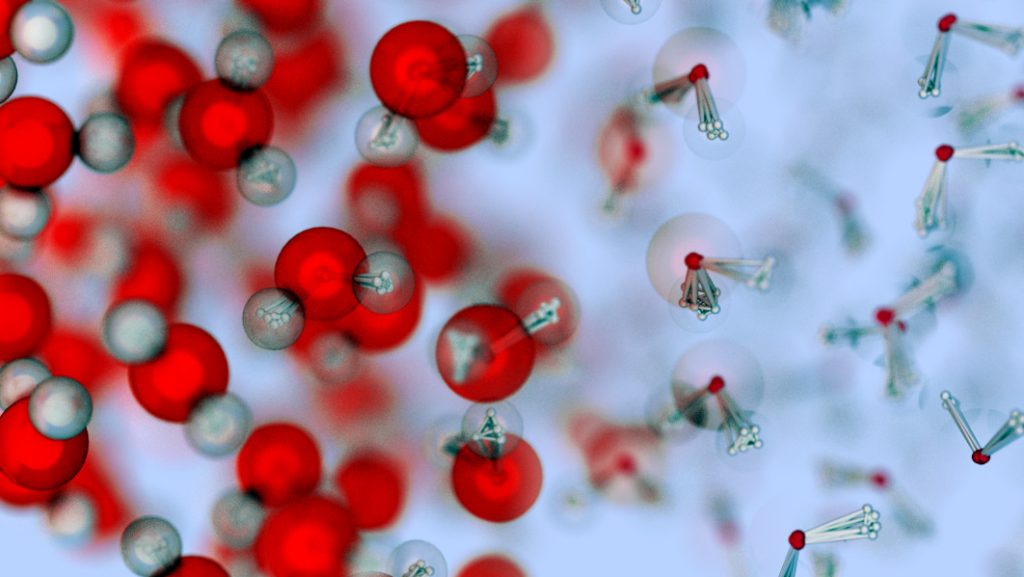The most accurate simulation techniques use quantum mechanics to describe the behaviour of the electrons in molecules, liquids and materials. Since the atomic nuclei are much heavier than the electrons, one often assumes that nuclei behave as classical particles, following the very same equations as billard balls or planets. This is a very good approximation for the heavier elements, but it breaks down for lighter atoms such as hydrogen. Just to make an examples, the physical-chemical properties of water are dramatically affected by so-colled “nuclear quantum effects”: if the hydrogen nuclei behaved classically the pH of water would be 8.5 – not a very healthy drink!

Accelerated path integral methods
In order to capture this subtle effects we use a simulation technique known as path integral molecular dynamics, that we have improved reducing its computational cost by an order of magnitude. You can find out more about these techniques on gle4md.org
Together with collaborators all over the world we develop the i-PI software, a universal force engine that makes it possible to run advanced molecular simulations, in particular those based on path integral techniques.
Using these methods we can model much more accurately important phenomena such as the solvation of ions in water, the transport of charge in solution, in fuel cells and in membrane proteins. We are planning to extend this line of research to include other hydrogen-containing materials, such as amorphous silicon (used in solar cells) and metals, that can be made brittle by the diffusion of hydrogen impurities.